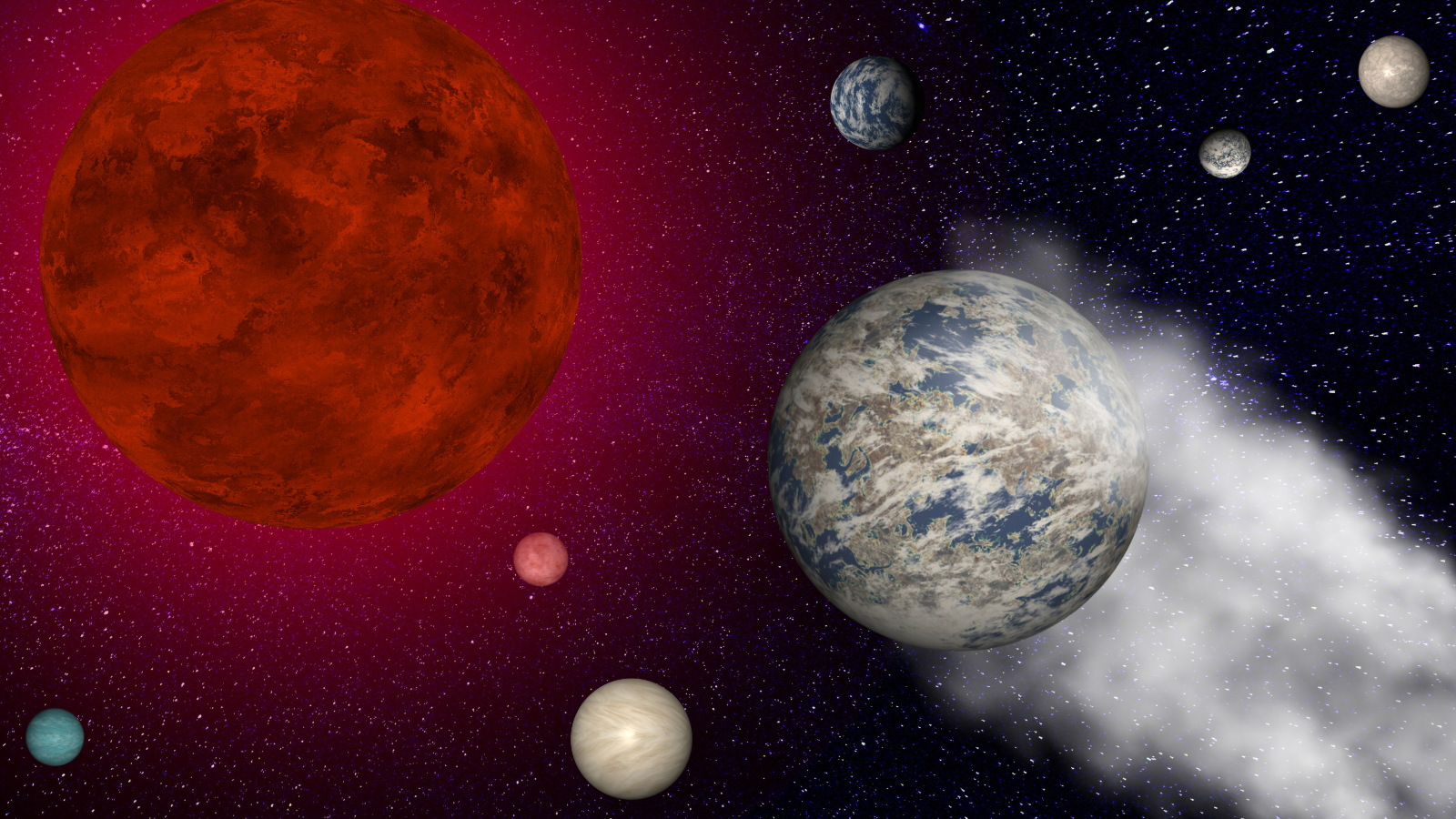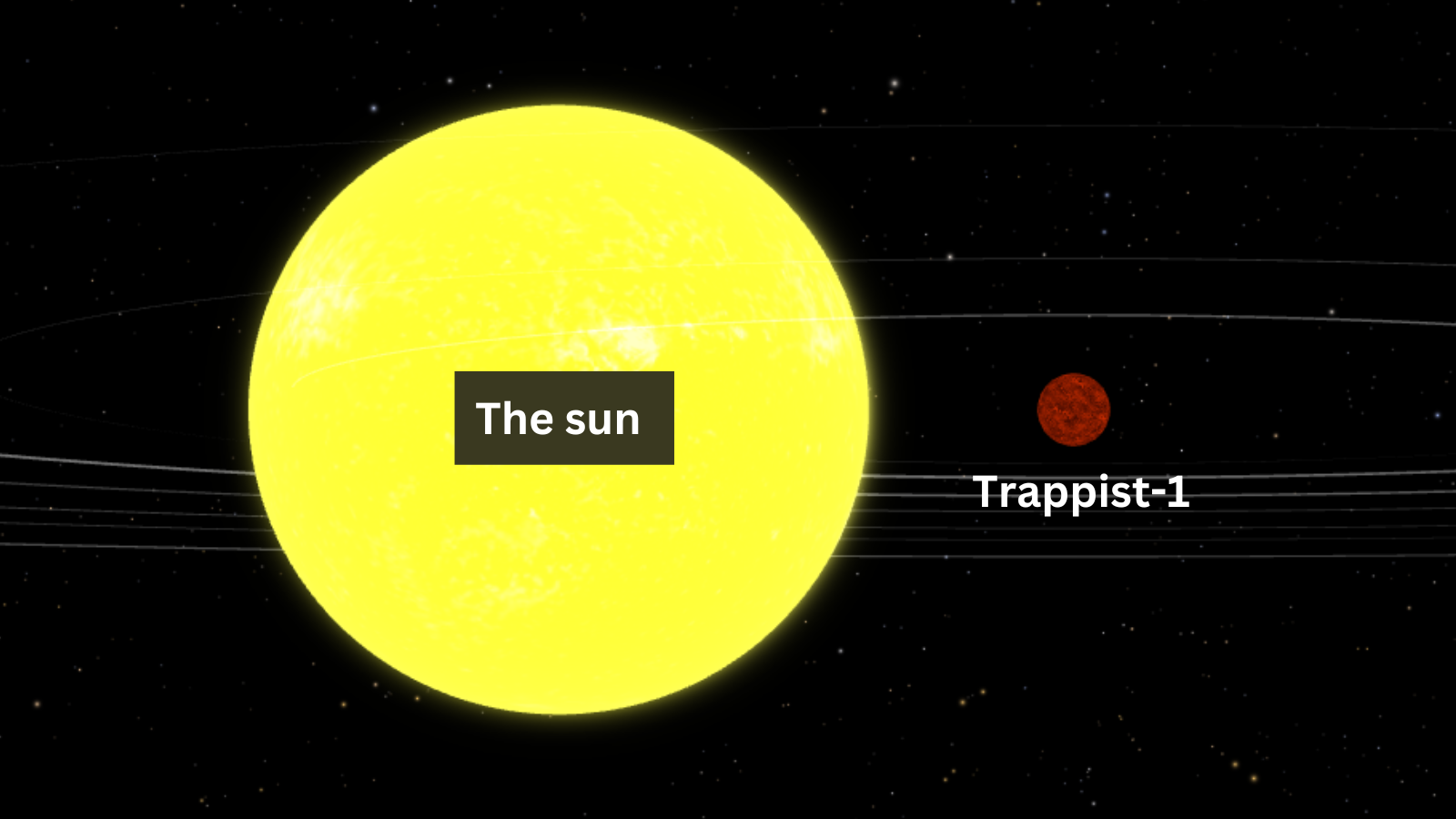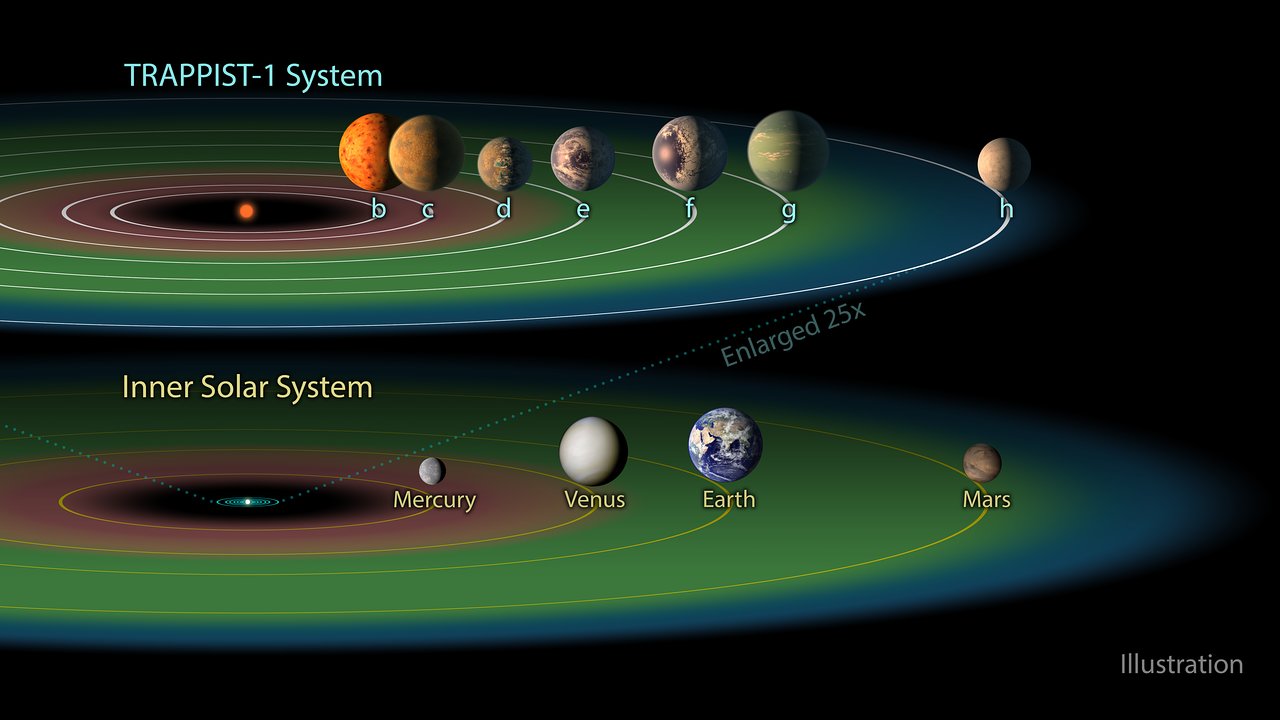Possibly habitable Trappist-1 exoplanet caught destroying its own atmosphere
"I would imagine that all Trappist-1 planets are going to have a hard time holding on to any atmosphere."

Scientists have discovered that a potentially habitable planet is having its atmosphere stripped, a process that may eventually render the world, Trappist-1e, inhospitable to life. The stripping appears to be caused by electric currents created as the planet races around its red dwarf host star.
It's a significant discovery because the Trappist-1 system, in which this exoplanet orbits a small red dwarf star, has been one of the primary targets in the hunt for alien life. Of the seven rocky Earth-like worlds in the system, at least 3 are located in the habitable zone, a region around a star that is neither too hot nor too cold to allow a planet to support liquid water.
A planet without an atmosphere can't hold on to liquid water, however, even if it is in the habitable zone, also known as the "Goldilocks zone." This shows that, though Trappist-1e may be in the habitable zone of the red dwarf Trappist-1, located 40 light-years from Earth, its habitability may be fleeting.
The same phenomenon affecting Trappist-1e's atmosphere could be impacting the atmospheres of the other planets in this habitable zone as well, which is bad news for the possibility of finding life in this system.
Ways to strip an exoplanet's atmosphere
Trappist-1e is roughly Earth-sized, yet has around 0.7 times the mass of our planet. It is the fourth planet from its star, orbiting at just 0.028 times the distance between Earth and the sun, completing one orbit in just 6.1 Earth days.
Despite this proximity, because Trappist-1 is much smaller and cooler than the sun, its habitable zone is much closer to its surface when compared to our star's habitable zone. To that end, it isn't radiation from this red dwarf that seems to be stripping the TRAPPIST-1e's atmosphere, but rather a wind of charged particles blown from the star called the "stellar wind."
Get the Space.com Newsletter
Breaking space news, the latest updates on rocket launches, skywatching events and more!
"We looked at how the space weather changes through the planet's orbit, with TRAPPIST-1e transitions very rapidly between very different stellar wind conditions and pressures, leading to a sort of pulsing compression and relaxation of the planetary magnetic field," Cecilia Garraffo, team member and an astrophysicist at Harvard & Smithsonian, told Space.com. "This drives strong electric currents in the upper atmosphere — the ionosphere — that heat up the atmosphere just like an electric heater."

Garraffo explained that Earth also experiences variations in the solar wind, which causes a similar heating of our atmosphere. The difference is that the heating felt by TRAPPIST-1e is up to 100,000 times stronger than what Earth experiences with the sun's solar winds. That's because Trappist-1e moves quickly around its star, and the motion drives powerful ionospheric currents that dissipate and create extreme heating, which the team calls "voltage-driven Joule heating."
Even though the team had predicted this effect back in 2017, the researchers were surprised by just how powerful they have now found it to be.
"It could be so strong for TRAPPIST-1e that the heat essentially evaporates the upper atmosphere," Garraffo said. "Over millions of years, the planet could lose its atmosphere entirely to this phenomenon."
The team's research shows there are more than a couple of ways for a planet to lose its atmosphere.
Team member and Lowell Center for Space Science & Technology researcher Ofer Cohen told Space.com that, typically, the loss of exoplanet atmospheres is believed to be driven by some external process. This includes strong radiation from the star, which can cause the atmosphere to heat up and escape, or charged particles in the stellar wind pelting planets, causing a strong stripping effect.
"In this case, the heating of the atmosphere, and its loss as a result, are driven only by the rapid planetary motion. So, the planet dooms itself to lose its atmosphere by simply moving around," Cohen said. "It's like the case when we are too lazy to clean the roof of our car from snow, and we just start driving, hoping that the air moving around the car would do the work for us and take the snow off — at least that's what we do in the Boston area.
"I think that it is very cool that planets can do this with their atmosphere."
What about the other Trappist-1 planets?
On Earth, our magnetosphere protects our atmosphere by diverting charged particles down magnetic field lines and out behind our planet. Mars, lacking a strong magnetic field, has had its atmosphere stripped by solar winds and harsh solar radiation. In fact, the Red Planet probably lost its water to space as a result.
Trappist-1e is also believed to have a magnetosphere, but these findings show it might not be sufficient to prevent atmospheric stripping.
"Normally, a planet's magnetic field acts as a protective bubble, but around TRAPPIST-1e, this bubble is compromised. The planet's magnetic field connects with the star's, creating pathways that allow the star's particles to hit the planet directly," Garraffo said. "This not only strips away the atmosphere but also heats it up significantly, leaving TRAPPIST-1e and its neighbors vulnerable to losing their atmospheres entirely."

Trappist-1e is the fourth planet from the red dwarf star at the heart of this fascinating planetary system of rocky worlds. Astronomers have previously discovered that Trappist-1b, the closest exoplanet to the star, seems to have already lost its atmosphere.
The team thinks voltage-driven Joule heating could also be impacting Trappist-1f and Trappist-1g, stripping them of their atmospheres as well, albeit to a lesser extent than they see happening with Trappist-1e. That's because, at 0.038 and 0.04683 times the distance between Earth and the sun from their star respectively, these planets are moving slower through the red dwarf's stellar winds than Trappist-1e is.
"Closer-in planets of Trappist-1 will have an even more extreme fate, and further out ones a bit milder," Garraffo said. "I would imagine that all Trappist-1 planets are going to have a hard time holding on to any atmosphere."
The team's findings could have implications outside the Trappist-1 system as well as in the search for habitable exoplanets and life outside the solar system. They suggest exoplanets close to their stars have likely lost their atmospheres even if they are well within the habitable zone of that star.
The results could further help suggest which stars could host planets with molecules that indicate the presence of life: Biomarkers.
"Our research suggests such low-mass host stars are probably not the most promising for hosting planets with atmospheres," Garraffo concluded. "Identifying which host stars can be conducive to habitable planets and observing those atmospheric transits with James Webb Space Telescope and future observatories, but also building the technology to interpret those results in terms of biomarkers."
The team's research was published on Feb. 16 in the Astrophysical Journal.
Join our Space Forums to keep talking space on the latest missions, night sky and more! And if you have a news tip, correction or comment, let us know at: community@space.com.

Robert Lea is a science journalist in the U.K. whose articles have been published in Physics World, New Scientist, Astronomy Magazine, All About Space, Newsweek and ZME Science. He also writes about science communication for Elsevier and the European Journal of Physics. Rob holds a bachelor of science degree in physics and astronomy from the U.K.’s Open University. Follow him on Twitter @sciencef1rst.
-
rod The reference cited in this report is, ref - Heating of the Atmospheres of Short-orbit Exoplanets by Their Rapid Orbital Motion through an Extreme Space Environment, https://iopscience.iop.org/article/10.3847/1538-4357/ad206a, 16-Feb-2024.Reply
Earlier before this article I read, Heating of the Atmospheres of Short-orbit Exoplanets by Their Rapid Orbital Motion Through an Extreme Space Environment, https://arxiv.org/abs/2401.14459
My note, this PDF report presents problems for astrobiology and habitable exoplanets orbiting close to red dwarf host stars. Many like TRAPPIST-1 e could have their atmospheres evaporating and change dramatically over long time scales. Exoplanets orbiting red dwarf stars could be losing much of their atmosphere due to Joule heating and magnetic field activity. Perhaps many are not astrobiology friendly places to visit :) -
Ultrahot To state that TRAPPIST-1e was "caught destroying its own atmosphere" is a gross misrepresentation of the paper and it's findings. The paper is purely theoretical and devoid of any observations which would "catch" the planet losing its atmosphere. Such atmospheric loss could have happened billions of years ago, especially since the author's are quoted as saying "Over millions of years, the planet could lose its atmosphere entirely to this phenomenon." If this *theoretical prediction* proves to be right, then it would be highly improbable that the planet would retain its atmosphere for billions of years until today given that this mass loss effect would be active throughout the planet's life.Reply -
rod I note, there are other reports of exoplanets with apparent rapid atmosphere loss and decay.Reply
Helium escapes from the atmosphere of a nearby exoplanet, observations find, https://phys.org/news/2023-08-helium-atmosphere-nearby-exoplanet.html
"Astronomers from the University of Chicago and elsewhere report the detection of an outflowing helium from the atmosphere of a nearby mini-Neptune exoplanet known as TOI-2134 b. The finding was detailed in a research paper published August 3 on the pre-print server arXiv..."
Ref - Outflowing helium from a mature mini-Neptune, https://arxiv.org/abs/2308.02002, 03-August-2023. "We announce the detection of escaping helium from TOI 2134b, a mini-Neptune a few Gyr old."
My note, the stellar evolution model age for the host star cannot contradict the atmosphere mass loss rate and the paper defends this view. A dating problem is apparent here. Some of these exoplanets could lose their atmospheres in a short time period than host star ages assigned, so explanations are offered with reconciliation calculations to show the host star ages are all correct, otherwise likely age dating conflicts are seen in some exoplanet studies now. -
Helio There are a number of issues I think have surfaced.Reply
The modeling presented suggests that the circumstances for these very tight-orbiting exoplanets can have short-term atmospheres (millions of years). It's implied that they, perhaps in the protoplanetary phase, would have had atmospheres.
These exoplanets are likely all in resonance and all, or most likely, tidally locked. The resonance protects them from migrating inward. But tidal locking will likely do them more harm than the magnetic issues presented by this hypothesis.









